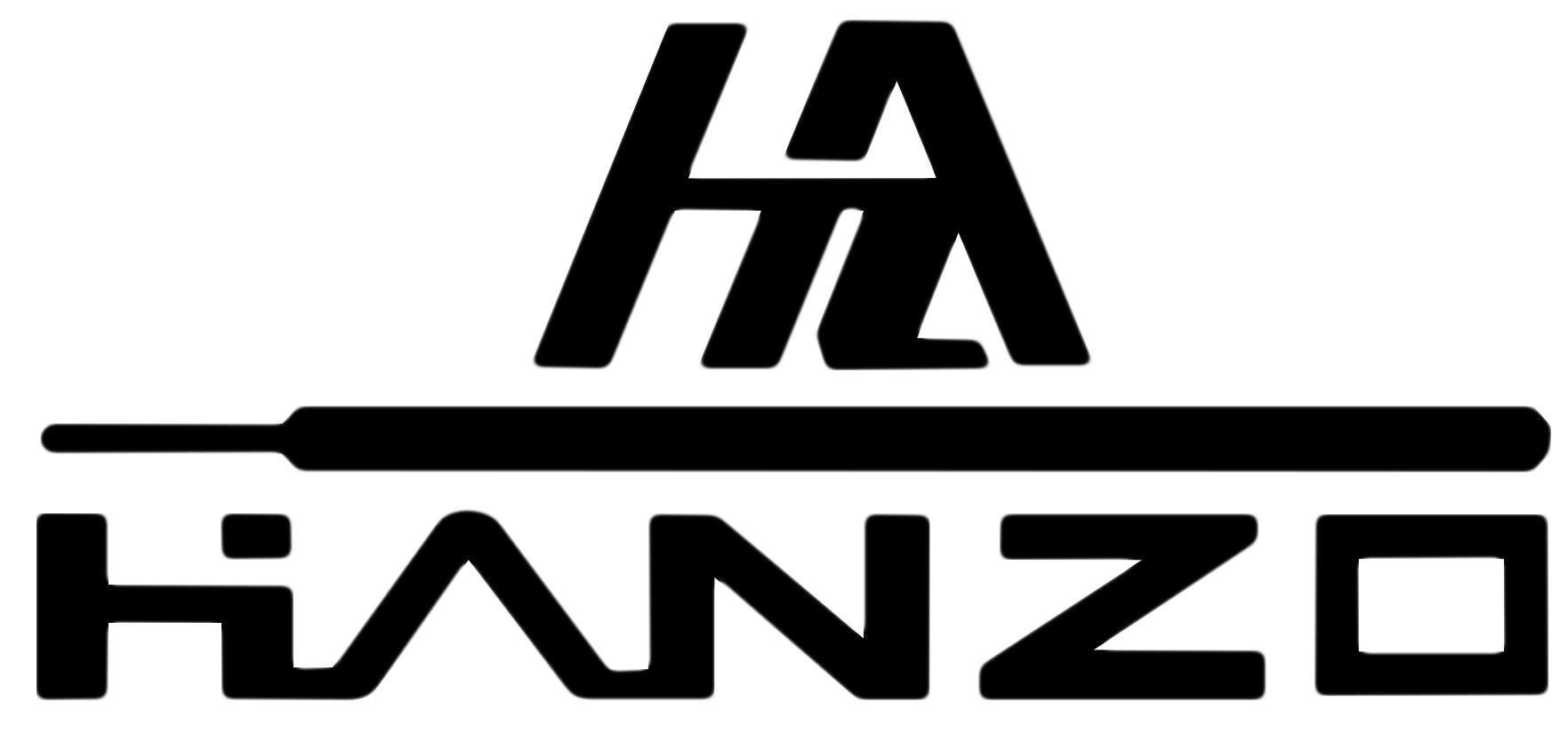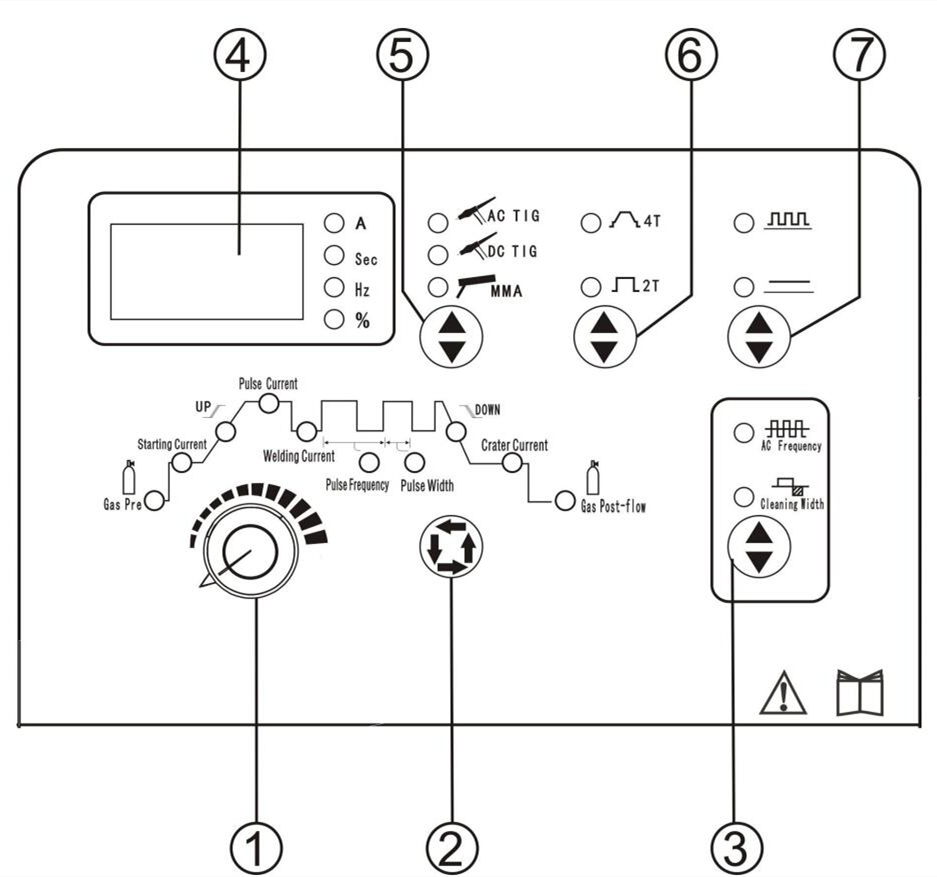
Mon. To Sat. 8:30-17:30
info@hanzo.cn
April month is starting, welcome to our knowledge time...
TIG welding is a kind of welding technology based on the principle of ordinary arc welding,
which uses argon to protect metal welding materials, and makes welding materials melt into liquid
on the substrate to form a molten pool through high current, so that the metal to be welded and welding materials
can achieve metallurgical combination. Due to the continuous supply of argon in high temperature fusion welding,
the welding materials can not contact with oxygen in the air, so as to prevent the welding materials Oxidation of oxygen.
Selection of power source type and polarity in manual TIG welding
The power source of manual TIG welding includes DC power source and AC power source,
and DC power source includes DC direct connection method and DC reverse connection method.
Direct current positive connection method: the weldment is connected to the positive electrode,
and the tungsten electrode is connected to the negative electrode.
In this way, when welding, the electron rushes to the weldment at high speed,
the welding temperature is high, and the molten pool is deep and narrow.
The positive ions rush to the tungsten electrode, which has low heat loss.
This method is suitable for welding heat-resistant steel, alloy steel, stainless steel, copper, titanium and other metals.

DC reverse connection method: the weldment is connected to the negative electrode,
and the tungsten electrode is connected to the positive electrode.
When welding, the electrons rush to the tungsten electrode at high speed.
The tungsten electrode has high heat and fast consumption, so it is generally not used.
Aluminum, magnesium and their alloys used for welding high melting point oxide film.
Due to the alternating polarity of AC power supply, it not only has the function of "cathode atomization",
but also has the characteristic of less consumption of tungsten electrode than DC reverse connection method.
It is suitable for the welding of aluminum, magnesium and their alloys.
Selection of nozzle in manual TIG welding
The size and shape of nozzle directly affect the protection scope and effect of argon protection zone.
The commonly used nozzles are No.6, No.7, No.8 and No.10. The choice of nozzle diameter should not be too large,
otherwise it will hinder the operation and waste argon; but it should not be too small,
otherwise the molten pool protection is not good, it is easy to produce defects, and the nozzle will be burned.
Argon flow rate and selection principle in manual TIG welding
In manual TIG welding, the flow rate of argon is generally 5 ~ 15L / min.
The argon flow rate should be different according to the environment.
If indoor, the argon flow rate can be smaller, which is 5-7L / min.
if outdoor, when there is wind, the argon flow rate should be larger,
which is 7-15L / Mn. Wind proof measures should be taken to prevent air from entering the molten pool and producing pores.
The scale of flowmeter in argon meter is 1mp,
1 grid indicates the argon flow rate of 1L / min, and the scale indicated by the floating ball is the flow value.
Rotation direction of switch: clockwise rotation is off, counterclockwise rotation is on.
Argon meter (argon flowmeter)
In work, if the cylinder is far away from you and it is not convenient to check the air flow,
you can point the nozzle at your face to feel the air flow. After a long time, you can roughly judge the gas flow.
It should be noted that in order to ensure the purity of argon, when the gas pressure in the argon cylinder is 0.5MPa, the gas should be changed and not used up.

Gas test method before manual TIG welding
If the interface between the argon belt and the argon meter and the argon arc handle leaks, the argon arc handle belt is damaged,
the tungsten electrode is eccentric, and the sandwich bulges, and the argon flow is too large or too small, the argon purity will be lower than 99.99%,
which will increase the probability of porosity and reduce the qualified rate of the welded joint. Therefore, it is necessary to test the gas before welding.
When testing the purity of the gas, we should find a thick scrap steel plate and grind it to expose the metallic luster.
1. to self fuse the grinding area.
2. to weld the self fluxing part with filler wire.
3. the weld surface is self melted.
4. to weld the self fusing part with filler wire.
5. to weld the upper layer of weld surface with filler wire again. If the argon gas is impure or some parts leak,
air holes will appear during gas test. Self melting refers to melting the base metal or weld surface, but no filler wire is needed.
Length of tungsten electrode extending out of nozzle and distance from molten pool in manual TIG welding
The distance between the tungsten tip and the nozzle mouth is generally 5 ~ 8mm,
and the distance between the tungsten tip and the base metal is 2 ~ 5mm.
If the tungsten tip extends out of the nozzle too short, the line of sight will be affected,
and if it is too long, the argon protection effect will be reduced. If the tip of the tungsten electrode is too close to the weld pool,
the line of sight will be affected, and it is easy to make the welding wire collide
with the tungsten electrode and the weld pool to produce defects such as pores.
If the distance is more than 3 mm, the protection effect of argon will be reduced, and pores will be easily produced.
See you next time! :)
|
|
|
+86-13923298312 info@hanzo.cn New Lighting Source Industry Zone B3, Luocun Town, Nanhai, Foshan, Guangdong, China. 
|





